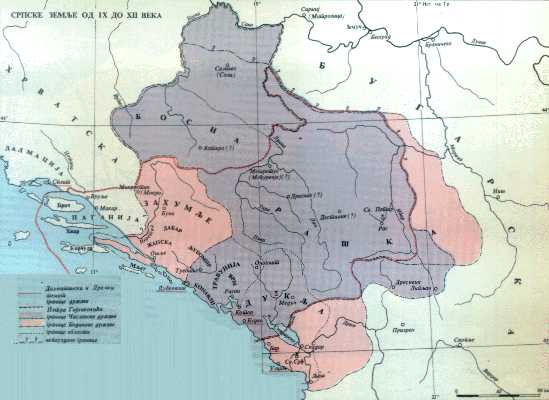
Political events that happened at the end of the 10th and beginning of the 11th century greatly influenced the ecclesiastical building in Niš and its surroundings. The vast empire of the Czar Samuil included the region of Niš, as well. A memory of Niš from that period is preserved in a note, full of bitterness, left by one of Samuil's relatives on February 9th 994 "for the descendants to remember". From this note we learn about Samuil's dark nature in his merciless struggle for power. Having been expelled from "our homeland Bulgaria, from the town of Tirnovo", his brothers and relatives found asylum in Niš. This note, although scarcely mentioned, confirms that Niš was a safe place at the end of the 10th century, so that even the refugees of such a high rank could find appropriate shelter in it.

Serbian countries from the centuries 9th to 12th, and the Macedonian state during Samuil
After Basil II (976-1025) had conquered Samuil, the Byzantine Empire regained its lost territories of the Balkan Peninsula. These new circumstances created the need for a reorganization of political and ecclesiastical administration and the submission of the local population to it. The process of Romanization started, lead by the Byzantine authorities. Thus, the most important towns in the conquered regions, including Niš as a significant religious center, were restored after 1020. According to the Imperial Edict of 1020, in which the dioceses of the Ohrid Archdiocese were listed, the Niš Bishopric covered the largest area in the newly occupied regions. This certainly confirms its high reputation and stable material conditions, but it also points out the intention of Byzantium to use the Church to consolidate its own influence in the region of Niš. Apart from Niš, the Bishopric of Niš included Mokro, Komplos, Toplica and Svrljig. In this respect, it is reasonable to expect a greater number of ecclesiastical structures in Niš and its surroundings.
In the first half of the 11th century, during the period of regaining control over these regions, Byzantine dignitaries had been building temples of various designs, mostly after the models from the capital. Such temples were fully accepted in Serbia not before the end of the 12th century. Some of the temples were restored then (St. Panteleimon), some of them much later (St. John in Orljane), while some had sunk into oblivion (St. Procopius).